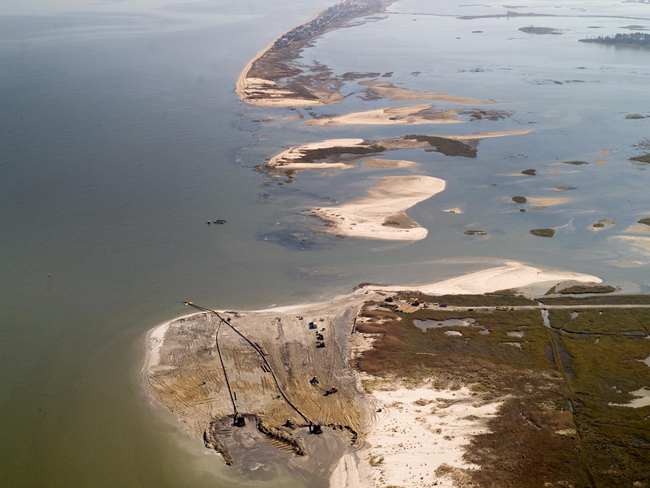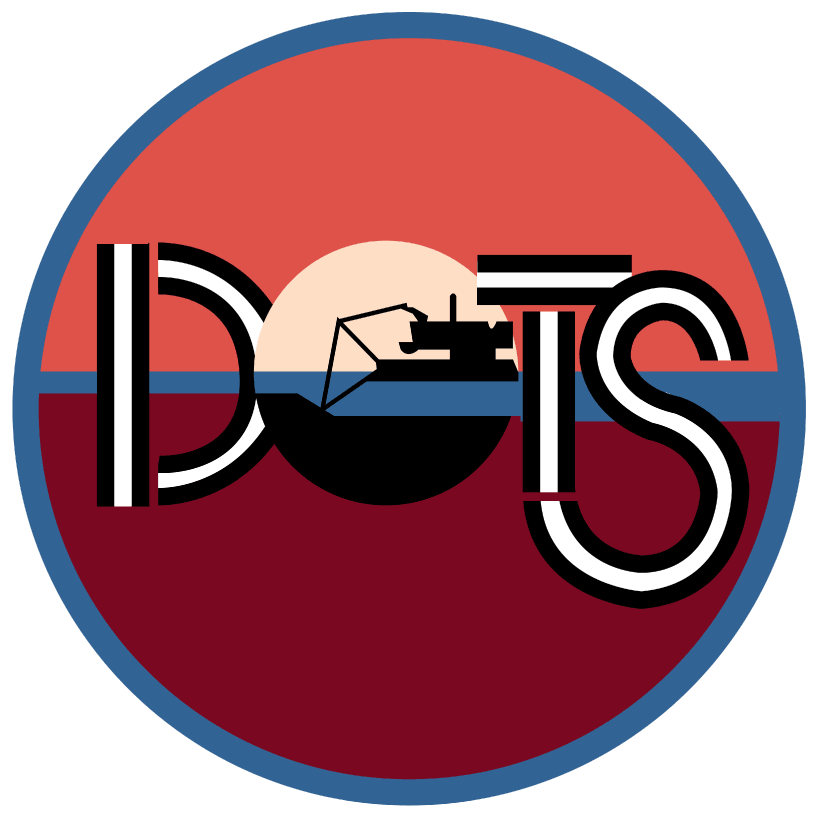PRIME HOOK NATIONAL WILDLIFE REFUGE RESTORATION

- Title: Prime Hook National Wildlife Refuge Restoration
- State: Delaware
- Project type: USACE
- Greater Beneficial Use Area: Coastal Delaware National Wildlife Refuge Complex
- Focus Area approximate center coordinates: 38.8844, -75.2815
- Nearest Federal Navigation Project: Delaware Bay
- Owner: USACE – Philadelphia District
- Beneficial Use Categories: Wetland Habitats, Aquatic Habitats
- Dredge type: Mechanical
- Status: Completed
- Keywords: salt marsh, Spartina alterniflora, Spartina patens, back-barrier, saltwater intrusion
Description:
The Prime Hook National Wildlife Refuge (NWR) is part of the greater Coastal Delaware National Wildlife Refuge Complex, established in 1963 as a diverse mosaic of beaches, dunes, back-barriers, and salt marshes. In the 1980s, many of the salt marshes at Prime Hook NWR were converted into freshwater impoundments following the installation of tide gates that interrupted natural tidal processes. Beginning in 2006, severe storm surges caused breaches in these freshwater impoundments, resulting in flooding of nearby communities and saltwater intrusion from Delaware Bay, which in turn led to vegetation loss. In 2012, Hurricane Sandy delivered another significant blow by converting valuable vegetated marsh and riparian habitat into expansive open water.
Given the rapid decline in the quality of coastal marsh habitats, the need for restoration became evident. Funding provided by the Hurricane Sandy Disaster Relief Act presented an opportunity to beneficially use dredged sediment to achieve the restoration objectives of the habitat, providing a promising long-term solution for mitigating the environmental and economic challenges faced by a storm-prone area.
The USACE – Philadelphia District partnered with the US Fish and Wildlife Service (USFWS), the Delaware Department of Natural Resources and Environmental Control (DNREC), and private conservation organizations including Ducks Unlimited and the Nature Conservancy to restore the refuge. The project partners aimed to find a solution that limited anthropogenic influence while ensuring the system’s longevity and integrity. Hydrodynamic modeling indicated that the best path forward was to restore the tidally influenced hydrology and reestablish the salt marsh habitat. The project team decided to use strategic dredging and placement of sediment to assist in rebuilding the storm-damaged and degraded system.
In 2015, more than one million cubic yards of dredged sediment from the Delaware Bay was placed in various parts of the project area, including the four breached areas of the impoundment. This resulted in the restoration of, dunes, beaches, and back-barrier platforms across nearly 8,000 linear feet of shoreline.
Additionally, over 25 miles of tidal channels within the NWR marsh system were dredged following historical drainage patterns. The purpose of the tidal dredging was to restore the flow of saltwater throughout the interior marsh complex and promote regrowth of salt marsh vegetation. The dredged sediment was placed in existing marsh areas to elevate the terrain and encourage the growth of Spartina grasses and other native vegetation.
American beachgrass (Ammophila breviligulata) was planted to stabilize the dunes and back-barrier platform, while wild millet (Panicum milliaceum) was scattered by airplane to enhance vegetation in the area. Spartina and Panicum grasses were planted throughout the back-barrier platform to further facilitate the transition back to vegetated salt marsh. The overall goal of the tidal channel dredging and planting efforts was to promote the recolonization of marsh-dependent wildlife species.
An extensive monitoring program is administered by representatives from DNREC’s Wetland Monitoring and Assessment Program, DNREC’s Delaware Coastal Program, the USFWS, and the University of Delaware. The program collects data on marsh quality, marsh elevation, water quality, vegetative establishment, tidal processes, and wildlife colonization/use. Post-restoration data are compared to baseline data that were collected before the restoration work began.
Initial monitoring results indicate a reduction of 700 acres of open water and an increase of 500 acres of vegetated marsh between 2015 and 2017. The colonization of various salt-tolerant plant species such as common rush (Juncus effusus), bearded sprangletop (Leptochloa fascicularis), and saltmarsh hemp (Amaranthus cannabinus) confirms the return of tidal influence. The restored beaches attract wildlife such as horseshoe crabs (Limulus Polyphemus), least terns (Sternula antillarum), American oystercatchers (Aematopus palliatus), and piping plovers (Charadrius melodus). In 2016, the NWR recorded six plover nests that successfully fledged 12 plovers.
The Prime Hook NWR restoration is one of the largest ecosystem restoration projects east of the Mississippi River. It bolsters this coastal area’s resilience against future storms surges, establishes invaluable fish and wildlife habitats, and serves as a blueprint for future salt marsh restoration programs. The success of the project proves that strategic dredging and placement of dredged sediment, guided by natural processes, can protect communities and rebuild valuable and productive ecosystems.
Further readings:
- Delaware Department of Natural Resources and Environmental Control. (2016). Prime Hook Then and Now: A Restoration Story. Wetland Monitoring and Assessment Program Blog. September 12.
- Morrison J. (2019). Coastal Recovery: Bringing a Damaged Wetland Back to Life. YaleEnvironment360. May 9.
- Smith K, Guiteras S. (2014). Tidal Marsh Restoration Monitoring at Prime Hook National Wildlife Refuge In Delaware.
- USACE. (2017). Prime Hook National Wildlife Refuge (Thin-Layer Placement Factsheet). United States Army Corps of Engineers, Engineer Research and Development Center, Dredging Operations Technical Support Program. July.
- USFWS. (2015). Prime Hook NWR Marsh Restoration Project Summary & Monitoring Plan. August 19.
- RECONOMICS Institute. (2018). The Successful Restoration of Delaware’s Prime Hook National Wildlife Refuge. Revitalization Issue #83. September 15.
Videos:
Building a Stronger Coast: Prime Hook National Wildlife Refuge. YouTube, Uploaded by USFWS, 25 May 2017.
Footage of the Prime Hook National Wildlife Refuge Salt Marsh Restoration from an Airboat. YouTube, Uploaded by USFWS, 11 September 2015.
Protecting Prime Hook. YouTube, Uploaded by USACE Philly District, 2 December 2015.
News releases:
- Guiteras S. (2017). Prime Hook NWR Marsh Restoration - Early Evidence of Success. Delaware Department of Natural Resources and Environmental Control, Wetland Monitoring and Assessment Program Blog. December 11..
- MacArthur R. (2018). Rebirth Occurring in Prime Hook Refuge Marshes: Officials Say $38 Million Project Is Working beyond Expectations. Cape Gazette. August 31.

